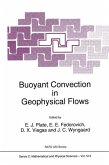High Quality Content by WIKIPEDIA articles! The Beaufort Scale is an empirical measure for describing wind speed based mainly on observed sea conditions. Its full name is the Beaufort Wind Force Scale. The scale was created in 1806 by Sir Francis Beaufort, an Irish-born British admiral and hydrographer. The scale that carries Beaufort's name had a long and complex evolution, from the previous work of others, to when Beaufort was a top administrator in the Royal Navy in the 1830s. In the early 19th Century, naval officers made regular weather observations, but there was no standard scale and so they could be very subjective - one man's "stiff breeze" might be another's "soft breeze". Beaufort succeeded in standardizing the scale. The initial scale of thirteen classes (zero to twelve) did not reference wind speed numbers but related qualitative wind conditions to effects on the sails of a man-of-war, then the main ship of the Royal Navy, from "just sufficient to give steerage" to "that which no canvas sails could withstand." At zero, all his sails would be up; at six, half of his sails would have been taken down; and at twelve, all sails would be stowed away.
Bitte wählen Sie Ihr Anliegen aus.
Rechnungen
Retourenschein anfordern
Bestellstatus
Storno








